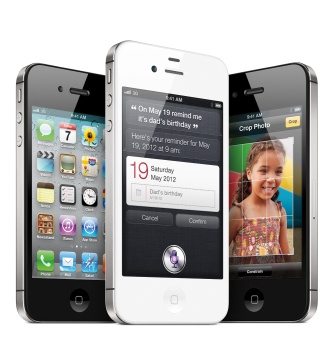ComScore (http://www.comscore.com), a company that “measures the digital world,” has released its report,” Digital Omnivores: How Tablets, Smartphones and Connected Devices are Changing U.S. Digital Media Consumption Habits.” The report found that smartphones such as the iPhone and tablets such as the iPad drive almost 7% of total US digital traffic.
The comScore report analyzes how cross-platform consumption has created a vastly different landscape as consumers utilize a growing number of devices to consume digital content. The report also analyzes the impact these shifting consumption habits have on online visitation and engagement across the Internet. To download a complimentary copy of the report, Digital Omnivores, got to http://www.comScore.com/DigitalOmnivores .
“The popularization of smartphones and the introduction of tablets and other web-enabled devices — collectively termed ‘connected devices’ — have contributed to an explosion in digital media consumption. As these devices gain adoption, we have also seen the rise of the ‘digital omnivores’ — consumers who access content through several touchpoints during the course of their daily digital lives,” says Mark Donovan, comScore senior vice president of mobile. “In order to meet the needs of these consumers, advertisers and publishers must learn to navigate this new landscape so they develop cross-platform strategies to effectively engage their audiences.”
Key findings highlighted in the report include:
° Mobile phones drive digital traffic around the world, while tablets are gaining steam. The share of non-computer traffic for the U.S. stood at 6.8% in August 2011, with approximately two-thirds of that traffic coming from mobile phones, and tablets accounting for much of the remainder.
° Increased W-iFi availability and mobile broadband adoption in the U.S. are helping drive connectivity. In August 2011, more than one third (37.2%) of U.S. digital traffic coming from mobile phones occurred via a Wi-Fi connection. This percentage grew nearly three points in just the past three months. On the other hand, tablets, which traditionally required a Wi-Fi connection to access the Internet, are increasingly driving traffic using mobile broadband access. In August, nearly 10% of traffic from tablets occurred via a mobile network connection.
° Today, half of the total U.S. mobile population uses mobile media. The mobile media user population (those who browse the mobile web, access applications, or download content) grew 19% in the past year to more than 116 million people at the end of August 2011.
° iPads dominate among tablets in driving digital traffic. In August 2011, iPads delivered 97.2% of all tablet traffic in the U.S. iPads have also begun to account for a higher share of Internet traffic than iPhones (46.8% vs. 42.6% of all iOS device traffic).
° In the U.S., tablet users display the characteristics of early technology adopters: young males in upper income brackets. In August, 54.7% of all tablet owners were male and nearly 30 percent were age 25-34. Nearly half (45.9 percent) of tablet owners belonged to households earning $100K and more.
° Nearly half of tablet owners made or completed a purchase on their tablet. Tablet owners exhibited significant use of their devices throughout the entire online shopping process – from doing the initial planning, conducting product and store research, making price comparisons, to finally transacting. In the past month, more than half of tablet owners looked up product or price information for a specific store (56%) and read customer ratings and reviews while on a tablet (54%).
Nearly three out of five tablet owners consume news on their tablets. 58%of tablet owners consumed world, national or local news on their devices, with one in four consuming this content on a near-daily basis on their tablets.
° Tablets facilitate real-time social networking. Nearly three in five tablet owners updated their social networking status or commented on others’ status on their device during September, while slightly less than half shared their location using a location-sharing site during.


